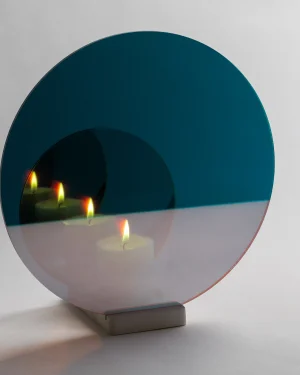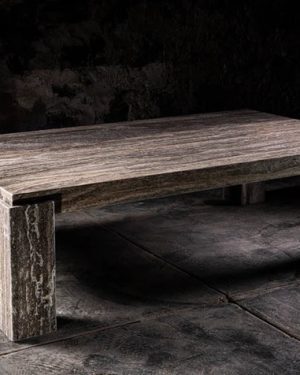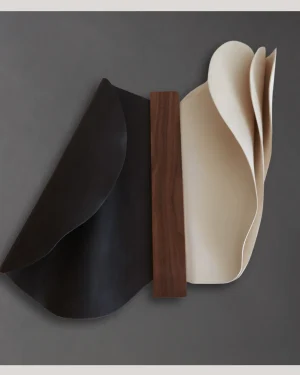
Stone Sculpting: The Timeless and Versatile Art Form You Need to Know
Stone sculpting is not just a relic of the past; it’s an evolving art form that has adapted to various styles and eras, including the Space Age, Art Deco, Maximalism, and Brutalist movements. From the sleek, futuristic lines inspired by the Space Age to the intricate, ornate details characteristic of Art Deco, stone sculpting has proven its versatility. Even in styles like Maximalism, where excess is celebrated, or Brutalism, known for its raw, unpolished aesthetics, stone sculpting finds its place.
This timeless craft has a unique way of reflecting the zeitgeist of any given period while maintaining its fundamental essence. Whether you’re an aspiring artist or an appreciative observer, understanding the multifaceted nature of stone sculpting offers a panoramic view of both history and artistic expression.
What is Stone Sculpting?
Stone sculpting is the art of carving shapes, figures, or designs into stone. Artists use tools like chisels, hammers, and sometimes modern machinery to remove unwanted material from a block of stone. The goal is to create a finished piece, like a statue or a decorative element, from the raw stone. This art form has been around for thousands of years and is used for everything from decorative art to making important monuments. Different types of stone, like marble, granite, or limestone, are used depending on the artist’s needs.


The Origins of Stone Sculpting
The earliest humans carved basic shapes and symbols into cave walls or standalone rocks using rudimentary tools. These carvings served various purposes, from communication to ritualistic practices. As societies grew more sophisticated, the art of stone sculpting evolved into intricate statues and monuments with religious, political, or aesthetic functions.
In ancient Egypt, monumental stone statues and intricate hieroglyphs told stories of gods and pharaohs. Greek sculptors like Phidias and Praxiteles created lifelike marble statues, setting enduring standards for beauty and realism. The Romans, inspired by the Greeks, built massive structures like the Colosseum and made lifelike busts of emperors and dignitaries. Throughout history, different cultures and artistic movements have shaped this enduring art form, making it as versatile as it is timeless.




See More Like This: Visit Our Online Gallery of Wood Designs
What Are Popular Stone Sculpting Techniques?
There are several popular techniques in stone sculpting, each with its own set of tools and methods. The most basic is “carving,” where the artist uses a chisel and hammer to remove unwanted material. This is often the starting point for any stone sculpture. “Modeling” is another method where the sculptor adds material to build up a form, although this is less common in stone sculpting compared to mediums like clay.
Another technique is “pointing,” where the artist uses a point chisel to rough out the shape before refining it. “Abrasive techniques” use sandpaper or grinding tools to smooth the stone and add finer details. Some artists also use “drilling” to create holes or hollow out areas of the sculpture. In modern times, power tools and even computer-aided design (CAD) have become part of the stone sculptor’s toolkit, allowing for even more intricate designs. These various techniques can be used alone or combined to create a wide range of artistic effects


What is the Best Stone for Each Stone Sculpting Technique?
When it comes to stone sculpting, the choice of material is as crucial as the technique employed. Different types of stone lend themselves to various sculpting methods, making it essential to match the right stone with the intended technique.
For those new to the art form or engaged in carving, softer stones are often the best choice. Soapstone, alabaster, and limestone are notably forgiving, easily shaped with simple tools like chisels and hammers. Their malleable nature makes them ideal for beginners and for projects requiring less intricate detailing.
Marble stands as the middle-ground option, favored for its versatility. Soft enough for carving intricate details yet hard enough to hold those details well, marble is a popular choice among artists aiming for a balance between workability and durability. This stone is particularly well-suited for techniques requiring finer details and smoother finishes.
For sculptors employing more demanding techniques like pointing or abrasive methods, harder stones such as granite are often the go-to materials. Granite’s hard surface allows for more durable and long-lasting work but usually requires specialized tools or machinery. These harder stones are best suited for outdoor sculptures or pieces requiring high durability.
In the age of technology, even stone sculpting has seen the integration of modern tools. Power tools and computer-aided designs are becoming commonplace, especially for intricate and detailed works. For these modern methods, medium-hard to hard stones like marble and granite are often preferred, given their ability to withstand the stress from power tools while holding intricate details well.
In conclusion, the best stone for your sculpting project will depend on your skill level, the techniques you plan to use, and the longevity you expect from the finished piece. By matching the right stone to the appropriate technique, artists can optimize both the process and the end result.
Notable Artists within Stone Sculpting
Numerous talented artists have graced the art of stone sculpting throughout history, each adding their unique touch.
Perhaps one of the most famous stone sculptors, Michelangelo, carved masterpieces like “David” and “Pieta” from marble. These works stand out for their intricate detail and emotional depth, and people continue to study and admire them today.
Another iconic figure, Auguste Rodin, introduced a modern sensibility into stone sculpture. His most famous work, “The Thinker,” focuses on emotional intensity and the human form. Rodin’s work has inspired a new generation of sculptors to explore more abstract and emotional themes.
Constantin Brâncuși, a pioneer of modern sculpture, took a minimalist approach that was revolutionary for his time. Works like “Bird in Space” show that simplicity can have as much impact as complexity.
British artist Henry Moore became known for his large, abstract outdoor sculptures, often in bronze but also in stone. Works like “Reclining Figure” give a new direction to public art by blending natural landscapes with artistry.
Isamu Noguchi, a Japanese-American artist, blended East and West sculptural traditions and worked in various materials, including stone. His works span from landscapes to furniture, showing his belief in the unity of form and function.
Today, many contemporary artists are pushing stone sculpting’s boundaries by incorporating new materials and techniques. While the tools and styles may evolve, the essence of transforming raw stone into art remains the same, showing the enduring allure of this timeless medium.
Read Now: Check Out These 12 Natural Stone Designs


Read Now: Shop +13 Unique Modern Marble Designs
Current State of the Market:
The market for stone sculptures is thriving, partly because online platforms now connect artists with buyers worldwide. While people still buy art from galleries and art fairs, digital marketplaces are making the art world more democratic. This accessibility helps emerging artists gain visibility and allows buyers to find art that suits their taste and budget. The market is attracting not only seasoned collectors but also younger enthusiasts looking for affordable, unique pieces.
Another trend is viewing art, especially stone sculptures by well-known artists, as a valuable investment. Along with this, sustainability and technological advances like 3D modeling are shaping buyer choices. Artists are exploring eco-friendly materials and methods. Despite economic ups and downs or changes in how people spend money, the market for stone sculptures remains strong and shows promise for future growth.




Read Now: Lava Stone: 13 Strong Designs to Buy
Conclusion
Stone sculpting has evolved through centuries and draws influence from various cultures and artistic movements. Different materials, techniques, and tools keep it dynamic and versatile. New platforms and technologies are boosting the market for stone sculptures, expanding opportunities for both artists and buyers. Whether you’re a seasoned collector, an emerging artist, or someone who just loves the beauty and history of sculpted stone, this art form has something to offer you. Its rich history and ever-changing techniques continue to captivate and inspire, proving its ongoing relevance in the world of art.
Discover Stone Sculpting Designs on Adorno
-

 Lago Short Vessel€1.120 incl. tax
Lago Short Vessel€1.120 incl. tax -

 Rua Cha – Minimalist Ash Wood Chair€450 incl. tax
Rua Cha – Minimalist Ash Wood Chair€450 incl. tax -
Piece on sale

 Isolation – Cork Wood Coffee Table€1.710
Isolation – Cork Wood Coffee Table€1.710 -

 Onde – Two-toned Mirror
Onde – Two-toned Mirror -

 Ovoid Keeper – Tissue Paper Holder
Ovoid Keeper – Tissue Paper Holder -

 Sabina Modern Floor Lamp Parota Natural Wood Ivory Fiberglass Shade€3.900 incl. tax
Sabina Modern Floor Lamp Parota Natural Wood Ivory Fiberglass Shade€3.900 incl. tax -

 Elements set (Fire, Earth, Water and Air)€5.938 incl. tax
Elements set (Fire, Earth, Water and Air)€5.938 incl. tax -
Piece on sale

 Onnda Flame Concentric Deep Sea – Dichroic Glass Marble€263 incl. tax
Onnda Flame Concentric Deep Sea – Dichroic Glass Marble€263 incl. tax -

 Ita – Wall Mounted Console€3.134 – €3.990
Ita – Wall Mounted Console€3.134 – €3.990 -

 Drop Seats – Narrow Blackened Oak Stool€313 incl. tax
Drop Seats – Narrow Blackened Oak Stool€313 incl. tax -

 Brush Occasional Table€2.523 – €3.154 incl. tax
Brush Occasional Table€2.523 – €3.154 incl. tax -

 Tamarindo Organic Modern Floor Lamp Turned Natural Parota Wood Ivory Fiberglass Shade€3.900 incl. tax
Tamarindo Organic Modern Floor Lamp Turned Natural Parota Wood Ivory Fiberglass Shade€3.900 incl. tax -

 Acid Lamp – Carved Teak Table Lamp€375 – €810
Acid Lamp – Carved Teak Table Lamp€375 – €810 -

 Planos Wooden Wall Art€2.250 incl. tax
Planos Wooden Wall Art€2.250 incl. tax -

 The Practice Chair€2.750 incl. tax
The Practice Chair€2.750 incl. tax -

 Sonora Rattan – New Edition€825 incl. tax
Sonora Rattan – New Edition€825 incl. tax -

 Striped Teak Ottoman€775 incl. tax
Striped Teak Ottoman€775 incl. tax -

 An Su – Side Table€676 incl. tax
An Su – Side Table€676 incl. tax -

 ‘heritage Mini Totem Bowls’€468 incl. tax
‘heritage Mini Totem Bowls’€468 incl. tax -

 The Walky Chair€3.744 – €7.175 incl. tax
The Walky Chair€3.744 – €7.175 incl. tax













